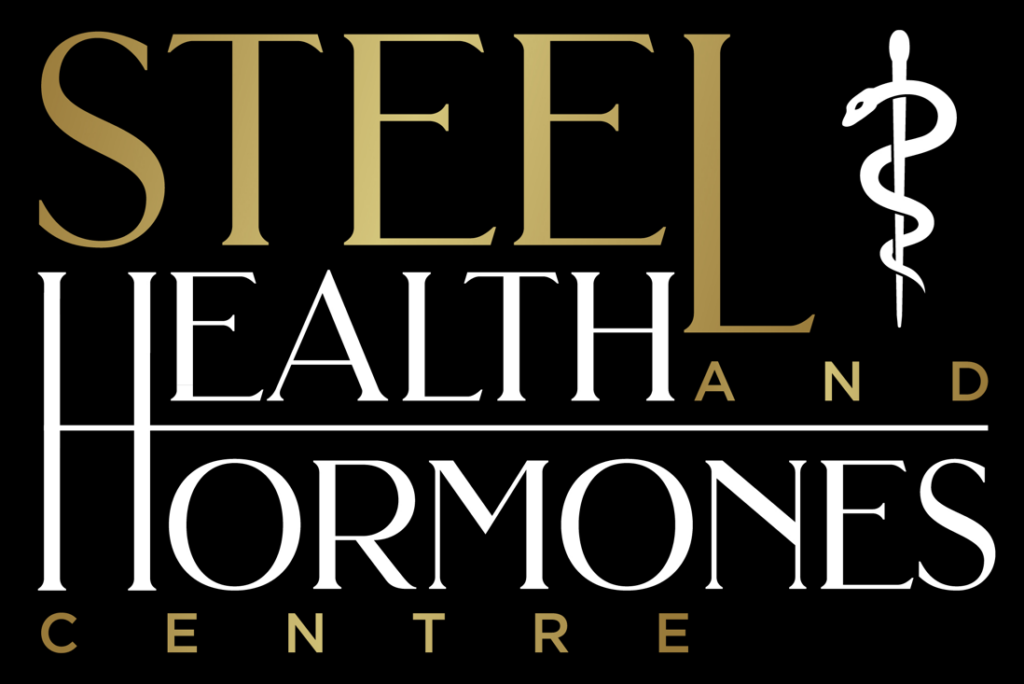Nandrolone has been used for therapeutic and muscle-building purposes for decades. Its chemical structure is derived from testosterone but possesses unique properties that create both overlapping and distinct effects. This makes nandrolone a potential therapeutic option for men on testosterone replacement therapy (TRT).
Article Breakdown
This article is divided into four parts:
- Understanding the Chemical Composition of Nandrolone Decanoate
- Potential Benefits of Nandrolone
- Potential Drawbacks of Nandrolone
- Best Practices for Nandrolone Decanoate Use at Steel Health and Hormones Centre
Disclaimer
Before we dive in, a quick disclaimer: This blog post is for educational and informational purposes only. Although I own Steel Health and Hormones Centre, an HRT and medical weight loss clinic in Pittsburgh, Pennsylvania, I am not a doctor. This article should not be used to diagnose, treat, or replace medical advice. If you’re interested in working with a qualified medical professional, fill out the contact form at the bottom of the page, and we’ll be in touch within 24 hours. Now, let’s get started.
Part 1: Understanding the Chemical Composition of Nandrolone Decanoate
Breaking Down Nandrolone Decanoate
Nandrolone Decanoate consists of two main components:
- Nandrolone: A 19-nortestosterone, meaning it lacks a methyl group at the 19th carbon position, giving it unique biological properties.
- Decanoate: An ester that slows the release of nandrolone into the system. Without an ester (nandrolone base), the compound would cause a rapid spike followed by a quick drop. Decanoate helps maintain more stable levels.
Pharmacokinetics of the Decanoate Ester
Decanoate is a relatively long ester, giving nandrolone decanoate a half-life of 7–12 days, depending on individual metabolism. This means it takes 7–12 days for half of the drug to be metabolized. A common misconception is that a drug is eliminated after two half-lives; however:
- It takes approximately 5–6 half-lives for a drug to become nearly undetectable.
- This means nandrolone decanoate can take over one to two months to fully clear from the system (97–99% elimination).
- Nandrolone metabolites can be detected for up to 18 months after the last administration.
- Nandrolone can also be attached to a phenylpropionate ester, which clears much faster than decanoate.
Nandrolone and Its Interaction with Biological Pathways
Understanding how nandrolone interacts with biological pathways helps explain its effects:
- Aromatase Enzyme (Estrogen Conversion): Nandrolone converts to estradiol at a much lower rate than testosterone. While this may benefit individuals sensitive to estrogen, nandrolone is progestogenic, meaning it binds to progesterone receptors—more on this later.
- Androgen Receptor (Anabolic Effect): Nandrolone binds more strongly to androgen receptors than testosterone, enhancing its anabolic effects while minimizing excessive androgenicity.
- 5-Alpha Reductase (DHT Conversion): This enzyme converts testosterone into dihydrotestosterone (DHT), a highly androgenic hormone. However, when nandrolone is converted, it produces dihydronandrolone (DHN), which has significantly less androgenic activity than DHT.
Now that we understand nandrolone’s chemical properties and interactions, let’s examine its clinical and anecdotal benefits.
Part 2: Benefits of Nandrolone Decanoate
1. Joint Pain Relief
Low-dose nandrolone is often used alongside TRT to alleviate joint pain. We’ve seen 50–100 mg per week provide significant relief in as little as three weeks. Research supports this:
A 2020 study titled “Nandrolone Decanoate Relieves Joint Pain in Hypogonadal Men: A Novel Prospective Pilot Study and Review of the Literature” found:
“Of the 18 men who responded to follow-up, 13 (72.2%) reported marked improvements in joint pain, with 5 (27.8%) reporting a decreased need for longstanding pain medication. Among respondents, pain scores were reduced by an average of 52%. No adverse events were noted.”
Potential mechanisms for this effect include:
- Increased Type III Collagen Synthesis – Observed in studies on postmenopausal women given nandrolone.
- Tendon Remodeling via Increased ACE Activity – Noted in rat studies where nandrolone increased ACE activity, potentially aiding tendon recovery.
- Speculated Joint “Lubrication” or Water Retention – Common anecdotal explanation, though unverified in clinical literature.
2. Muscle Growth and Fat-Free Mass (FFM) Increase
A 2006 study on HIV patients compared nandrolone to testosterone and placebo. Participants received either 150 mg of nandrolone every two weeks or 250 mg of testosterone every two weeks. The study reported:
“Treatment with nandrolone resulted in significantly greater increases in fat-free mass and weight compared with placebo and showed a trend for greater increases than testosterone.”
This suggests that nandrolone is more anabolic per milligram than testosterone, making it a favorable option for lean mass gains with fewer androgenic effects.
Part 3: Potential Drawbacks of Nandrolone Decanoate
1. Sexual Dysfunction (“Deca-Dick”)
One of the most concerning side effects is erectile dysfunction. Several mechanisms may contribute:
- Low DHT and Estradiol: Since nandrolone converts minimally into these hormones, levels may become insufficient for optimal sexual function.
- Progesterone Receptor Activation: This can reduce dopamine, impacting mood, motivation, and libido. Additionally, lower dopamine levels may increase prolactin, which can contribute to erectile dysfunction and a prolonged refractory period.
2. Potential for Gynecomastia
While nandrolone does not convert to estradiol at high rates, its progestogenic activity and potential prolactin increasemay contribute to gynecomastia.
Part 4: Best Practices for Nandrolone Decanoate Use
Optimizing Testosterone-to-Nandrolone Ratio
- Using testosterone alongside nandrolone mitigates some of the negative effects, such as low estradiol and DHT.
- Anecdotally, a 2:1 ratio of testosterone to nandrolone is optimal. This helps counteract nandrolone’s dopaminergic suppression while maintaining anabolic benefits.
- Our clinic finds that keeping nandrolone at or below 100 mg/week is generally well tolerated.
Lab Monitoring
- Regular bloodwork is essential for safety.
- Monitoring hormones, CBC, lipids, and CMP helps avoid long-term negative effects.
Final Takeaways
- Nandrolone can be effective for joint pain relief and muscle growth.
- It is best used in moderate doses (≤100 mg/week) alongside testosterone.
- Careful lab monitoring is crucial.
- If side effects arise, scaling back or discontinuing is the best approach.
If you’re interested in the white glove approach to HRT, please fill out a contact form down below and someone will be in touch within 24 hours.
Works Cited
1. pubmed.ncbi.nlm.nih.gov/2233278/
2. https://www.scielo.br/j/rbme/a/FJCjNYFvhJT6BbqVpsGqZYm/
3. https://pubmed.ncbi.nlm.nih.gov/16494628/
4. https://bpspubs.onlinelibrary.wiley.com/doi/10.1038/bjp.2008.165


